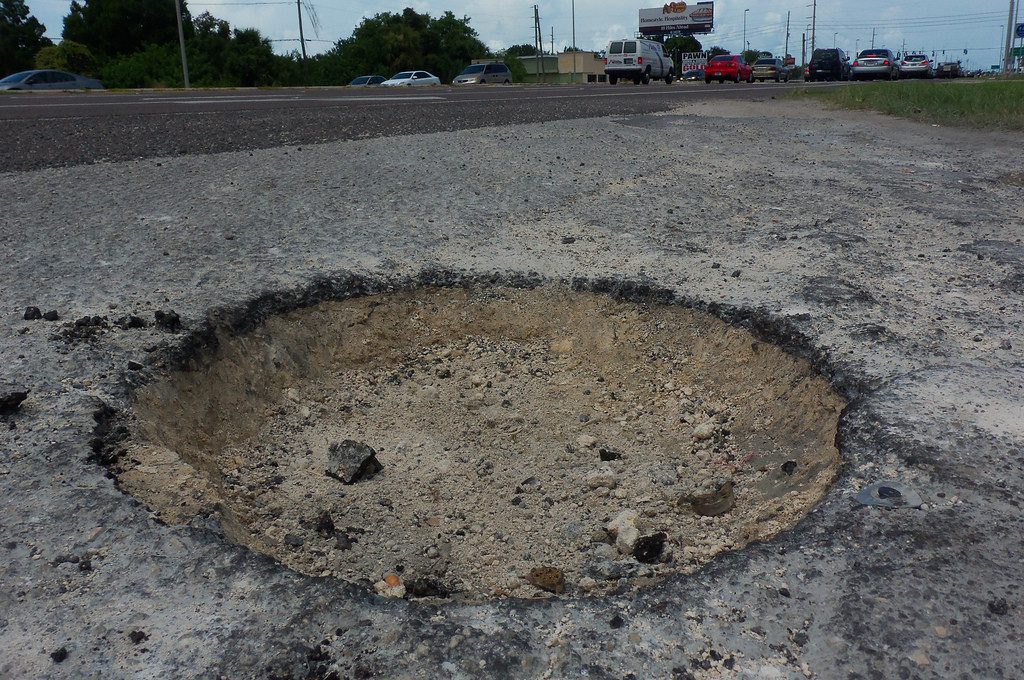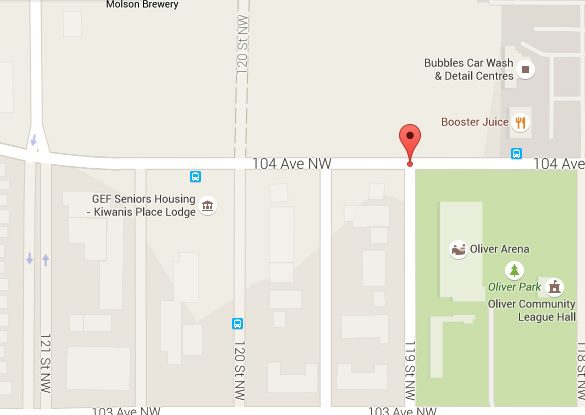Edmonton cyclist sues city after pothole encounter


We’ve all been there. You’re riding along, things are going great, and then suddenly, out of nowhere, your bike slams hard through a crack in the asphalt or over a sudden protrusion in the road. Sometimes it means a flat tire; at other times, you might be looking at a bent or broken frame.
For one Edmonton man, it meant a dramatic crash and high medical costs—and he’s holding the City of Edmonton responsible, the Edmonton Journal reported.
In this case, the sudden obstacle was one of a cyclist’s worst nightmares: a pothole, right in the Sherwood Park rider’s path. Biking eastbound on 104th Avenue in the early hours of June 23, 2013, not far from 119th Street, Troy Michael Donovan reached a part of the road that was riven with cracks and potholes, the latter of which his bike met with a bang. After hitting it, Donovan lost control, going down hard on the poorly-maintained asphalt.

The crash meant a serious head injury—Donovan was knocked out when he hit the ground—as well as a fractured clavicle, bruised ribs, cuts and ongoing pain in both his shoulders and neck. In response, the cyclist is handing the bill for the incident’s immediate and eventual fallout to the city—a claim for what amounts to $152,500 in damages.
“As a result of his bike hitting a pothole,” the text of the claim reads, “he lost control and was thrown to the pavement. As a result of the accident, the bike was damaged and Troy sustained serious injuries.” Of those damages, $85,000 are for general pain and suffering; $55,000 accounts for the loss of past and future income. It also covers the cost of any future care or expenses connected to—as Donovan’s legal argument states—the consequence of the city’s failure to maintain infrastructure.
The stretch of asphalt where Donovan crashed, according to the lawsuit, is an unmarked piece of road that nonetheless serves as a main commuter route, connecting City Hall, MacEwan University and the downtown core. The suit also argues that before the accident, there had been numerous written and oral complaints made about the condition of that part of 104th Avenue—complaints, allegedly, that the city did nothing to address. No repairs were made, no grievances acknowledged, and critically, no signage or barricades erected to warn traffic about the road’s condition—cyclists or otherwise. This negligence, the statement of claim argues, contributed directly to the accident. And it’s the city’s fault, it says.
There’s no word yet on when the case might be going to court.
